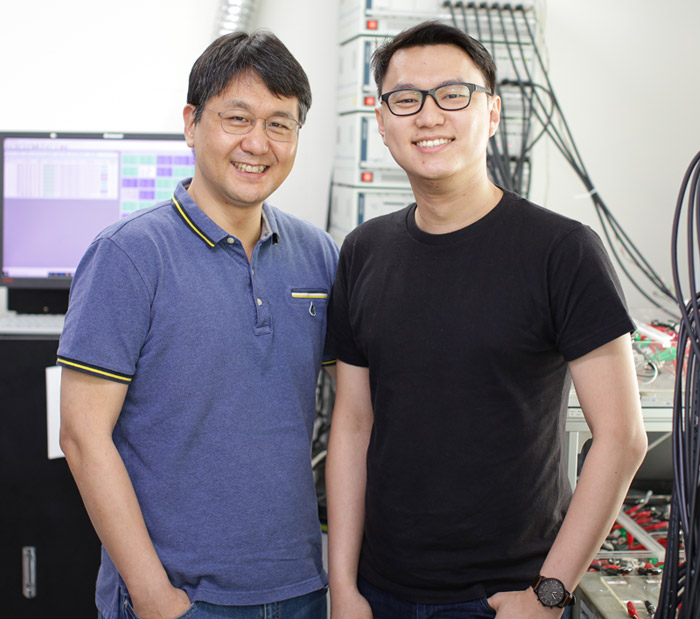Research Stories
Revealing the Intercalation Mechanisms of Lithium, Sodium, and Potassium in Hard Carbon
Prof. Jaehoon Kim’s team from SKKU’s School of Chemical Engineering and Prof. Sangkyu Kwak’s team from UNIST’s School of Energy and Chemical Engineering suggested a new path to develop safe and large volume materials by revealing the intercalation mechanisms of lithium, sodium, and potassium in hard carbon.
Mechanical Engineering
Prof.
KIM, JAEHOON
Researcher Handi Setiadi Cahyadi
Revealing the Intercalation Mechanisms of Lithium, Sodium, and Potassium in Hard Carbon
Due to its high stability, widespread availability, low-cost, and excellent performance, hard carbon is considered as one of the most promising anode materials for sodium and potassium-ion batteries. To further develop a high-performance electrode, it requires a deep understanding of the carrier-ion storage mechanism. However, this has proven to be not such a trivial task because of the complex structure of hard carbon.
Recent work by Prof. Kim and his team unveil that the sloping voltage region is caused by the adsorption of Li-ion, Na-ion, and K-ion on the surface of active sites such as defects, edges, and residual heteroatoms. Afterward, the carrier-ions penetrate into the graphitic layers, creating a low voltage plateau region.
This finding also further proven by DFT simulation, which revealed the change in the inner molecular structure of the hard carbon during the discharge process. The “ripening” phenomenon, in which the edge of the hard carbon structure open up when the carrier ion approach to the edge of graphitic layer, is very prevalent for the Na-ion and K-ion because of their larger electronic radius. However, the same degree of ripening does not occur for the Li-ion, which leads to a smaller capacity as compared to the Na-ion and K-ion.
This finding is a breakthrough that will help future researchers understand the ion-storage mechanism behind the hard carbon material. In addition, the underlying concept of “ripening” phenomenon can be used to develop a high-performance electrode material in the future.
This research was supported by the Technology Development Program to Solve Climate Changes of the National Research Foundation (NRF) funded by the Ministry of Science, ICT & Future Planning (2017M1A2A2087635) and the Waste‐to‐Energy Technology Development Program of the Korea Environmental Industry & Technology Institute with financial resources provided by the Ministry of Environment, Republic of Korea (No. 2018001580001).
This research was published in 'Advanced Energy Material' on April 15.
※ Title : Intercalation Mechanisms: Revealing the Intercalation Mechanisms of Lithium, Sodium, and Potassium in Hard Carbon
※ Source : https://onlinelibrary.wiley.com/doi/abs/10.1002/aenm.202000283
This diagram demonstrates the electron radius of ions and hard carbon's layer and its transposition when Li, Na, and K ions are inserted into hard carbon. The K- ions with the largest electron radius show the broadest edge expansion in which subsequent K- ions can penetrate deeper into the inter layer spacing of hard carbons.

